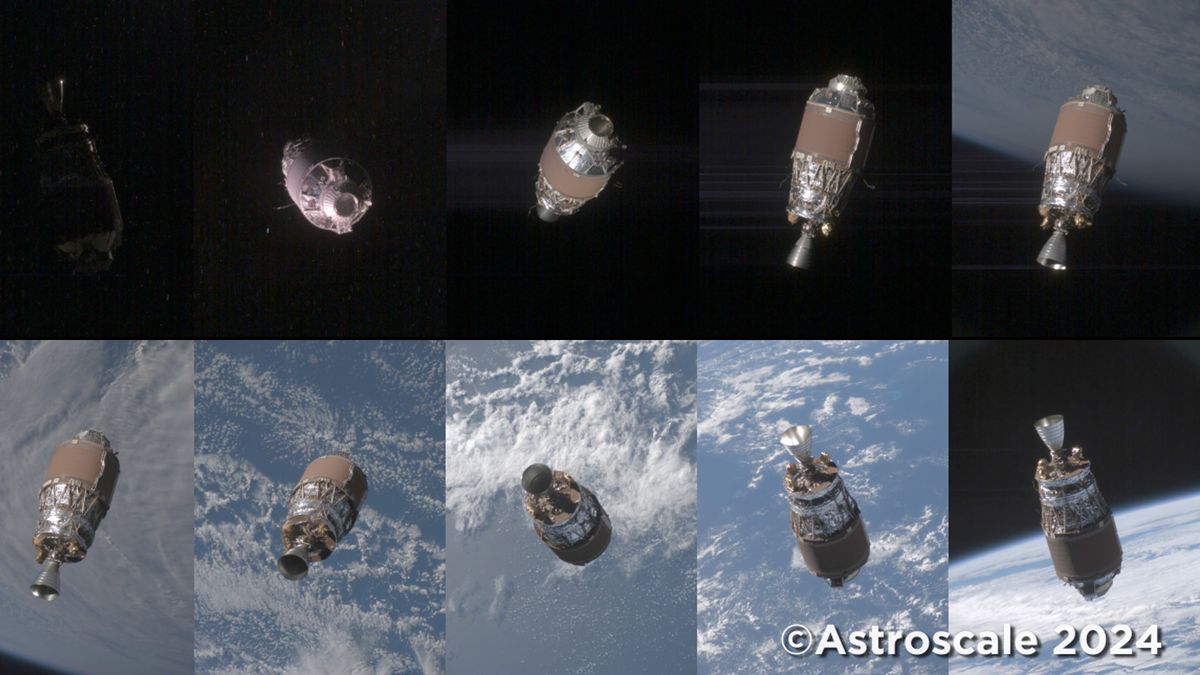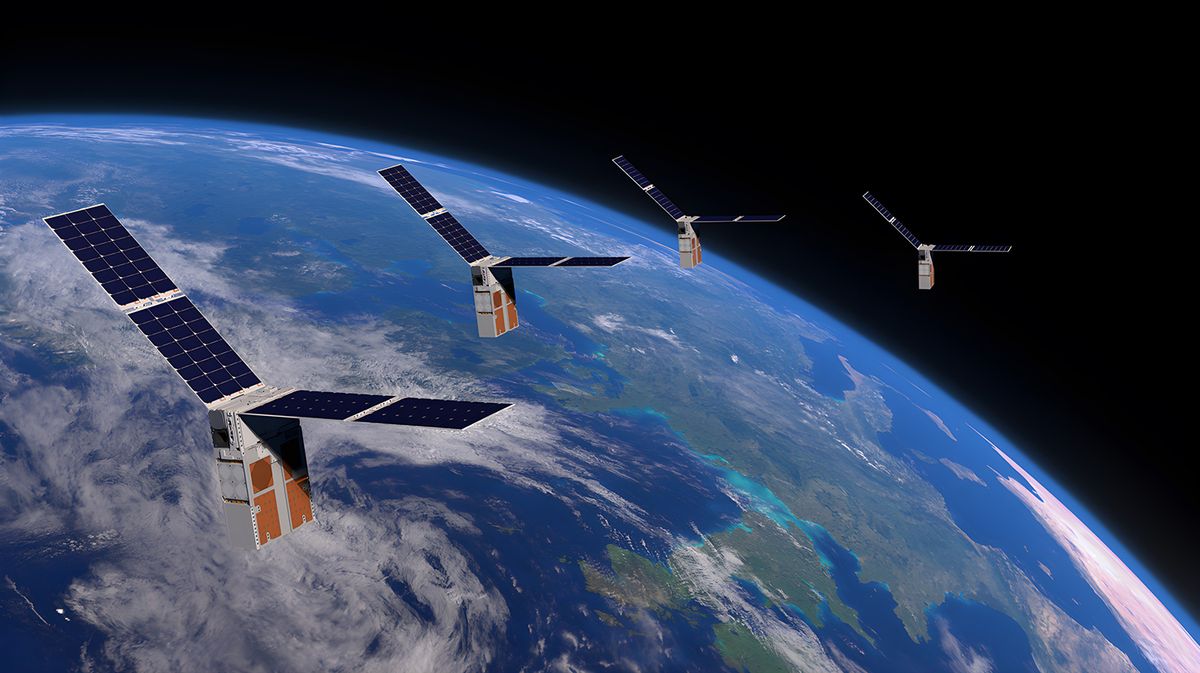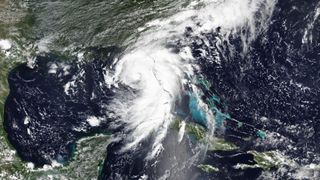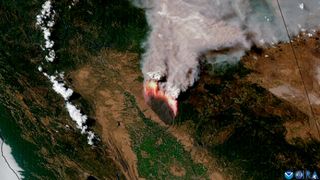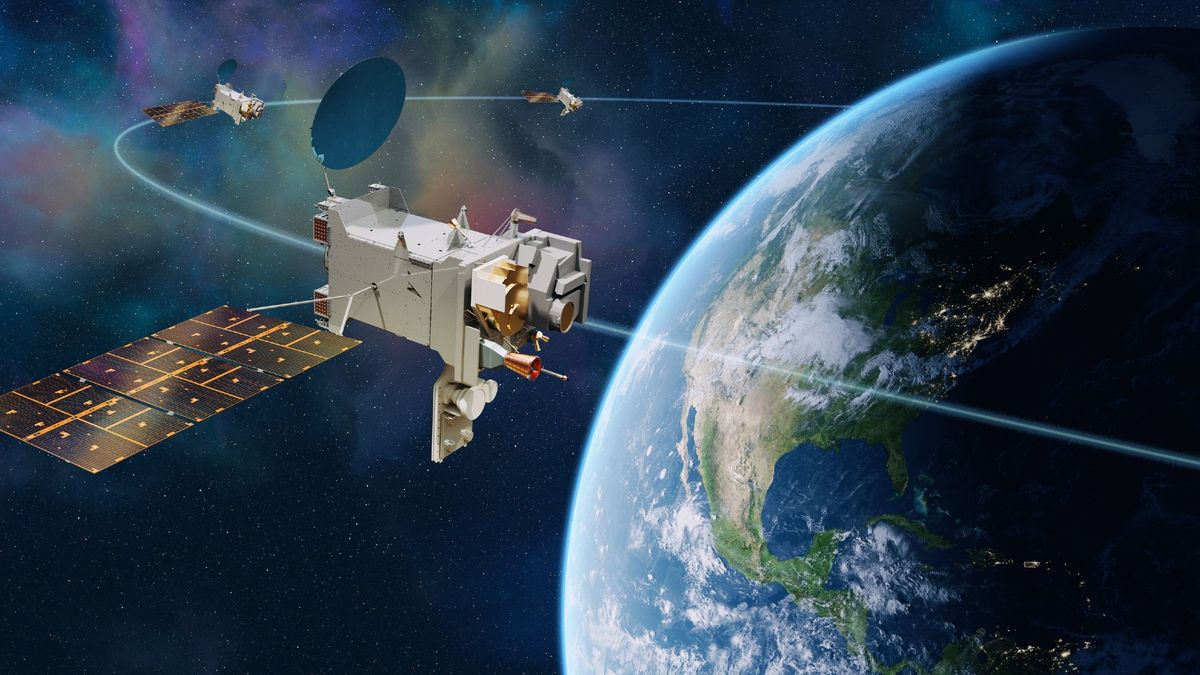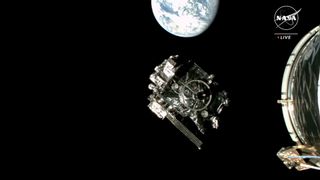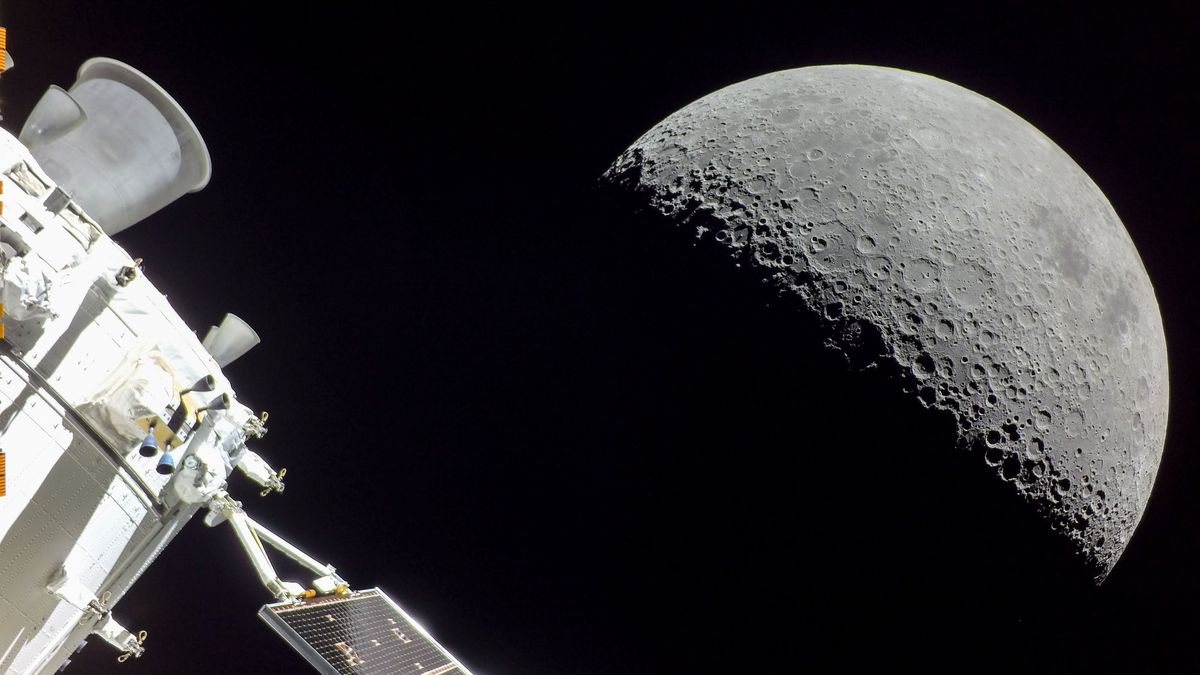Japanese space-sustainability company Astroscale just inked a $90 million deal to take a bus-sized rocket stage out of orbit by the end of the decade. The pioneering project, funded by the Japanese Aerospace Exploration Agency (JAXA), is a continuation of Astroscale’s ADRAS-J mission, which recently completed an up-close orbital inspection of a 12-year-old upper stage of a Japanese H-2A rocket. The new mission, called ADRAS-J2, will grab the 3-ton, 36-foot-long (11 meters) rocket stage using a robotic arm and pull it into Earth’s atmosphere to burn up, demonstrating a critical…
Read MoreTag: satellites
StarFOX autonomous satellite swarm could level up space exploration
Scientists are trying to build a new sort of satellite, and have recently tested their idea with the Starling Formation-Flying Optical Experiment, or “StarFOX.” You may be getting flashbacks to the retro Star Fox video game series — and you’d be right to imagine this experiment as a science fiction fantasy brought into reality. There are no space-faring animals here, though. Basically, StarFOX is a quartet of small satellites that work in tandem — a satellite “swarm,” as it’s sometimes called. This concept isn’t entirely new, but there’s something that…
Read MoreHurricane Debby makes landfall in Florida as satellites watch from space (video)
Satellites in space watched Hurricane Debby roar across Florida on Monday, bringing with it potentially record-setting rainfall and dangerous 80 mph (129 km/h) winds. NOAA’s GOES-East satellite recorded real-time views of Debby as it watched the hurricane unleash its force across the southeastern U.S. The footage, gathered from the satellite’s position about 22,236 miles (35,785 kilometers) above Earth’s equator, shows Debby strengthening in the Gulf of Mexico on Sunday, swirling dangerously close to Florida. Debby made landfall at Steinhatchee, Florida around 7 a.m. ET (1100 GMT) on Aug. 5 as…
Read MoreWatch devastating Park Fire rage in stunning satellite video
The second-largest wildfire of 2024 continues to rage in northern California, and satellites are watching the destruction unfold. The Park Fire wildfire is currently burning north of Sacramento and has already consumed more than 560 square miles (1,455 square kilometers), an area larger than the city of Los Angeles. It is already the largest wildfire California has experienced this year. As of July 29, the fire was only 12% contained, according to InciWeb, a wildfire information service operated by the U.S. National Interagency Fire Center. As the fire continues to…
Read MoreNOAA’s upcoming GeoXO satellites could be ‘weather-monitoring platform of the future’
For the second time in a row, Lockheed Martin will be at the forefront of the creation of National Oceanic and Atmospheric Administration (NOAA)’s next generation weather satellites. Last month, National Aeronautics and Space Administration (NASA) awarded the aerospace company a $2.27 billion contract to develop and manufacture spacecraft for the next generation of NOAA satellites that will follow the Geostationary Operational Environmental Satellite (GOES) series, Geostationary Extended Observations (GeoXO). The contract includes developing three initial spacecraft and will also allow the option for an additional four. Work on the…
Read MoreWatch GOES-U weather satellite float above a brightly shining Earth in stunning video from space
The launch of NOAA’s powerful new GOES-U weather satellite did not disappoint. The satellite took off on Tuesday (June 25) atop a SpaceX Falcon Heavy rocket in a picture-perfect launch under a clear blue sky at Launch Complex 39A at NASA’s Kennedy Space Center in Florida. The launch marked the 10th launch of Falcon Heavy, and lofted the fourth and final member of the U.S. National Oceanic and Atmospheric Administration’s (NOAA) GOES-R series of weather spacecraft. Four and a half hours after take off, Falcon Heavy’s second stage deployed GOES-U into space…
Read More1st annual space piracy conference will examine threats of orbital crime and smuggling
Eye-patches on! Practice your best “grrr.” Plop down pieces of eight, doubloons and cue “Captain” Jack Sparrow! Get ready for the First Annual Space Piracy Conference, set for early next year. Held by the Center for the Study of Space Crime, Policy, and Governance (CSCPG), the conference is a “two-day, invite only symposium that brings together experts prepared to review crime, piracy, and smuggling in space,” according to its website. “Be among the first to discuss mitigating space crime and piracy, from the perspectives of investment, space law, space policy, intelligence,…
Read MoreIs it time to put a dimmer on the push for space solar power?
The thought of beaming power to an energy-hungry Earth from space has long been studied. It was first proposed over 80 years ago in science fiction. “It was quiet in the officer’s room of Solar Station #5 – except for the soft purring of the mighty Beam Director somewhere far below,” wrote renowned author Isaac Asimov in his April 1941 story “Reason” appearing in the magazine “Astounding Science Fiction.” Asimov had his characters tending a solar energy collection station in space that routed energy rays to receivers on Earth, as…
Read MoreHow can we protect satellites in Earth-moon space? This new software could help
As the space around Earth becomes increasingly cluttered with human-made junk, scientists are ramping up their efforts to safeguard satellites in real time. The latest in that effort are new algorithms being developed at the University of Central Florida (UCF) to automatically monitor and protect spacecraft from bumping into satellites and asteroids in cislunar space — the realm between Earth and the moon, which is under the gravitational influence of both celestial bodies. Because cislunar space is so vast, tracking and predicting the orbits of satellites, spent rocket stages and…
Read MoreSatellite operator SES acquiring Intelsat in $3.1 billion deal
SES plans to buy fellow satellite operator Intelsat, in a deal that could help the combined company compete with SpaceX’s huge Starlink broadband network. Luxembourg-based SES is acquiring Virginia-based multinational Intelsat for $3.1 billion in a deal that’s expected to close next year, the two companies announced today (April 30). “In a fast-moving and competitive satellite communication industry, this transaction expands our multi-orbit space network, spectrum portfolio, ground infrastructure around the world, go-to-market capabilities, managed service solutions and financial profile,” SES CEO Adel Al-Saleh said in a statement. “I am…
Read More